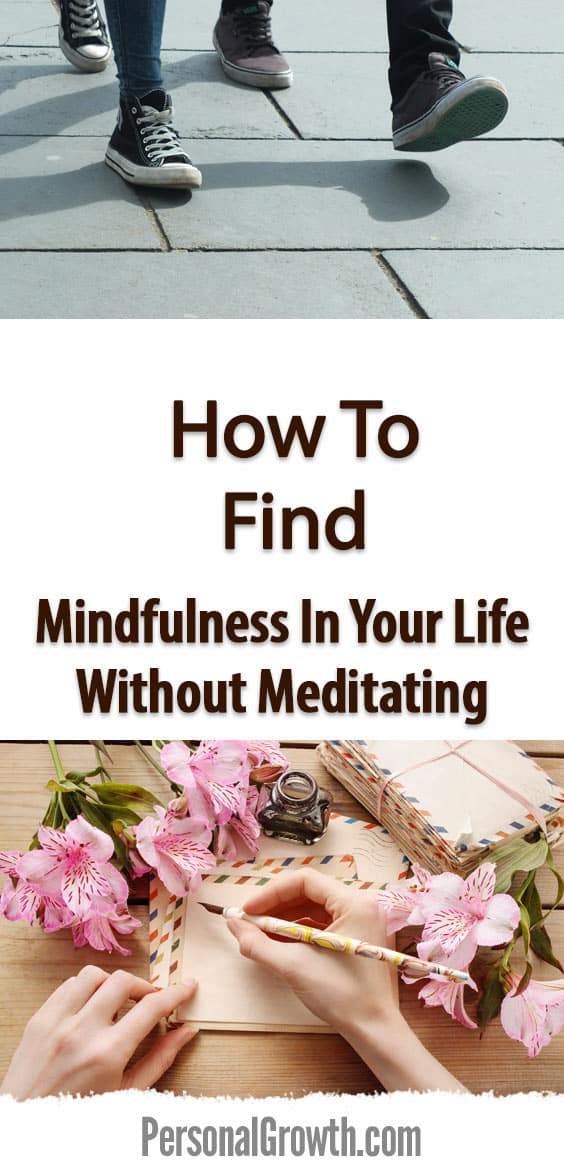

You have probably noticed the term ‘mindfulness’ has become an increasingly popular topic in Western culture. As Westerners seek new ways to cope with the stress of a fast-paced lifestyle, Eastern practices, such as meditation and yoga, are progressively integrating into our way of life. Utilizing these tools, Westerners are learning to bring a sense of mindfulness to their otherwise chaotic day.
So what exactly is mindfulness?
Mindfulness is the awareness of the present moment. It is the ability to accept what is happening in the present moment (i.e. thoughts and feelings), without becoming attached to them. It is noticing the sensations and letting them be.
How will mindfulness benefit you?
Mindfulness exercises (like meditation and yoga) are used as tools to teach you how to experience a sense of peace and happiness within the present moment. When we fixate on how life used to be or how it should be, we are living in the past or in the future. By constantly holding onto these notions, you are preventing yourself from appreciating and enjoying the life you are actually living.
“If you are depressed, you are living in the past. If you are anxious, you are living in the future. If you are at peace, you are living in the present.” We cannot change the past and we cannot predict the future — all that we really have is this present moment, and even that we cannot control. However, we can govern how we experience the present moment and how we think and feel about the present moment, so long as we use this tool of awareness.
Mindfulness produces awareness, and with awareness, you can learn to create a sense of peace with yourself. This peace allows you to let go of your attachment to the past and future, allowing you to be happy in the present moment.
How can you experience mindfulness?
For many people, myself included, the idea of meditation can seem rather daunting at first. Sitting in one place for longer than ten minutes alone with my thoughts is something I’d do almost anything to avoid. It would be fair to say that this discomfort is something many Westerners experience, as evident by the number of people who turn to their phone as a distraction any spare moment they get.
If you are someone who stresses easily or lives a fast paced lifestyle and you’re not so keen on the idea of meditation, there are plenty of other ways you can create mindfulness in your everyday life.
Here are 5 activities you can do to create mindfulness in your everyday life:
1. Music
This can be experienced by playing music yourself or listening to music. If you are playing the music yourself you may find you naturally go into a state of awareness when you are creating new music — losing yourself in the moment, only to realize moments later that an hour has passed.
If you are seeking mindfulness by listening to music it is important that listening to music is the only task you are doing— it’s not just background noise whilst doing something else. Listen to the sounds and the lyrics —notice the thoughts and feelings that arise without getting caught up in the emotions. Allow your thoughts and feelings to flow.
2. Free Writing
This task is very useful when your mind is clouded with indecision, conflict, and confusion. Sometimes you can feel stressed without really knowing why — free writing can bring awareness to your thoughts on a deeper level.
To undertake this mindfulness activity all you need is a pen, paper and a quiet space where you won’t be interrupted. You can even set a timer for 10- 15 minutes. Once you begin, just write and write — any thought or feeling that pops into your mind, write down, regardless of how much sense it makes.
The first few minutes may not be so significant. However, once you release all those thoughts from the surface, you allow the underlying thoughts to emerge. This task is quite powerful and allows you to accept the thoughts by expressing them without self-judgement.
3. Real Conversation
Real conversation is something many people take for granted. When was the last time you started a casual conversation with the words ‘how are you?’ with the intention to truly discuss another person’s general wellbeing?
In a real conversation, you are completely engaged in what the other person is saying. You are not listening to the other person so you can think of your next reply — you are actively listening to the words they say, the tone in which they speak and the facial expressions and body language that accompanies it. With active listening, your full attention is committed to the conversation and only the conversation (not your phone or the food you’re eating or the conversations around you).
Active listening opens you up to a discussion that is more profound than just a general conversation about people, things, and events. It allows you to communicate on a deeper level and it can be somewhat therapeutic when talking with someone trusting and open minded.
4. Walking
Many types of exercise can create mindfulness if you allow it to. However, the reason I have chosen walking is because it encourages you to slow down, and it is when you slow down from the fast pace of everyday life that you allow yourself to notice things. When you notice things you create awareness, and with awareness comes mindfulness.
Going for a walk (particularly in nature) can be quite grounding, allowing you that chance to connect with your thoughts and feelings.

Everyone has to eat, so this mindfulness task is easy to integrate into your day. For many, cooking can seem like a chore or a stressful task you need to get out of the way so that you can satisfy your hunger and move onto the next task. However, when you allow yourself the chance to enjoy and appreciate the task of cooking you unexpectedly find a sense of mindfulness in it.
Mindfulness in cooking can be found in a task as simple as chopping vegetables or stirring a risotto. It is the simplest of tasks, yet the experience of it deviates once your focus changes to the present moment and you allow yourself to let go of all the other thoughts that would normally cloud your mind.
It’s not always easy to change your perspective and immerse yourself in the present moment with these everyday tasks. However, when you allow yourself to practice mindfulness with these everyday activities you create an opportunity for gratitude, acceptance and most of all peace and happiness.

